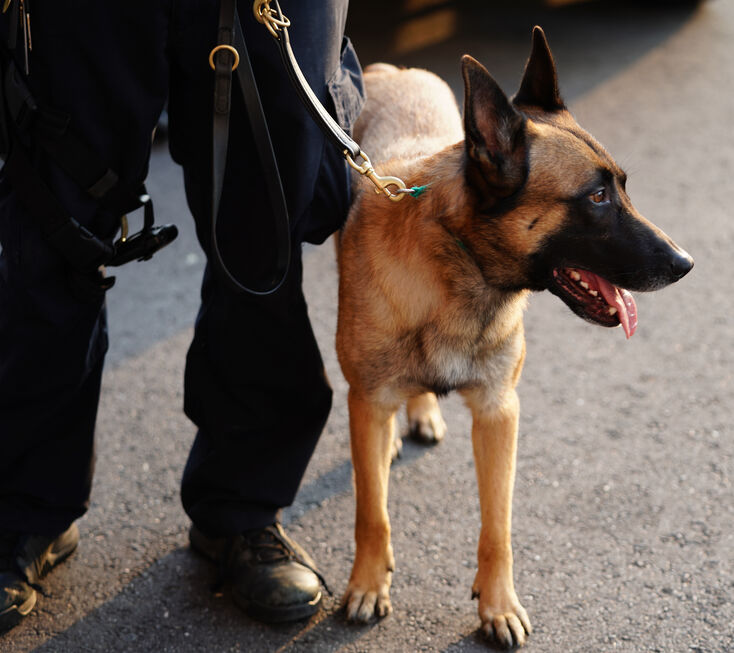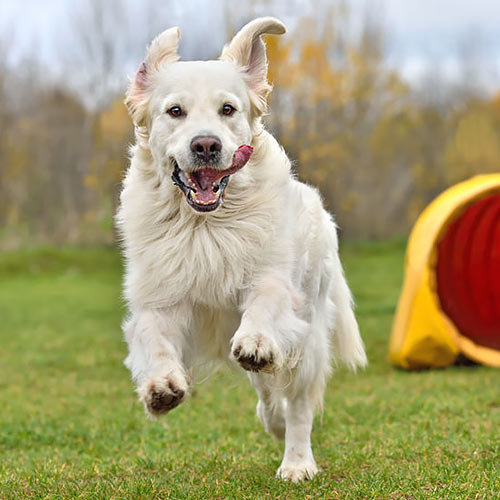A cadaver dog is a working canine who helps law enforcement find dead people in disasters, accidents, murders, or suicides. They specialize in detecting the scent of human decomposition, including bodies that are buried up to 15 feet deep.
Dogs have roughly 220 million olfactory receptors in their noses, making their sense of smell about 40 times greater than the average human. German shepherds are the most common dog used for this important job because they have about 225 million olfactory receptors, which is higher than many other dog breeds. The more receptors a dog has, the better suited they are for sniffing out human remains.
A common misconception is that German Shepherds or other breeds are born with the ability to be cadaver dogs; this is not true. While their genetics play a vital role in their work, cadaver dogs must be trained to do this kind of work. A person who trains a cadaver dog is almost as important as the canine itself 🙂 . There are specific cadaver detection training courses that people can take to teach a dog to find cadavers reliably and efficiently.
Here are a few important things you will learn in a cadaver detection training course that will have you ready to assist law enforcement with time-sensitive searches.
Understanding Scent
Dogs detect chemicals carried in the air to their noses. They compare whether the scent is stronger at their right nostril or the left and navigate through the odor plume to find the source of the odor. The ability to smell separately with each nostril helps to determine the direction of the smell’s source.
Within the first few moments of sniffing, the dog becomes aware of not just what kind of things are out there but where they’re located. Learning how dogs use their sense of smell is an important lesson for a cadaver dog trainer. You need to understand how your canine biologically operates, so you can take the proper measurements in training them accurately.
Basic Human Decomposition
Understanding the process of human decomposition and how it impacts cadaver dog training is another important lesson taught in school. You will learn about the 500+ stages of decomposition and the many factors that affect decomposition rate. Well-trained and handled cadaver dogs are an asset in locating human remains and finding remains in all stages of decomposition in various environments.
Water Cadaver Dog Training
Cadaver dogs are used for searching on land or in water. Training water cadaver dogs is a process that takes a considerable amount of time, experience, and a solid understanding of training detection dogs. A scent in the water will rise to the surface allowing the dog to smell it and alert their handler. These trained water canines can also be helpful in situations where a person has drowned. Not all cadaver dogs have what it takes to work in the water. A cadaver trainer school will teach the differences in training and protocol for land and water cadaver dogs.
Canine First Aid
You and your cadaver dog are a team. As a team, you might have to travel through dangerous or hard-to-navigate terrain. Learning how to properly care for your animal if they get hurt or injured on the job is a must. Your cadaver detection training course will teach you how to recognize problems with your dog, minimize their injuries and act appropriately if something happens to them.
Deciding to become a cadaver dog trainer is an intense but rewarding job. You get to aid in missing persons cases, police investigations and help families get answers to their long-awaited questions.
You can apply online to enroll in a cadaver detection training course at Dog Trainer College to learn the skills mentioned above and so much more. Cadaver training is a respectable and necessary job that can leave you feeling fulfilled and proud.


